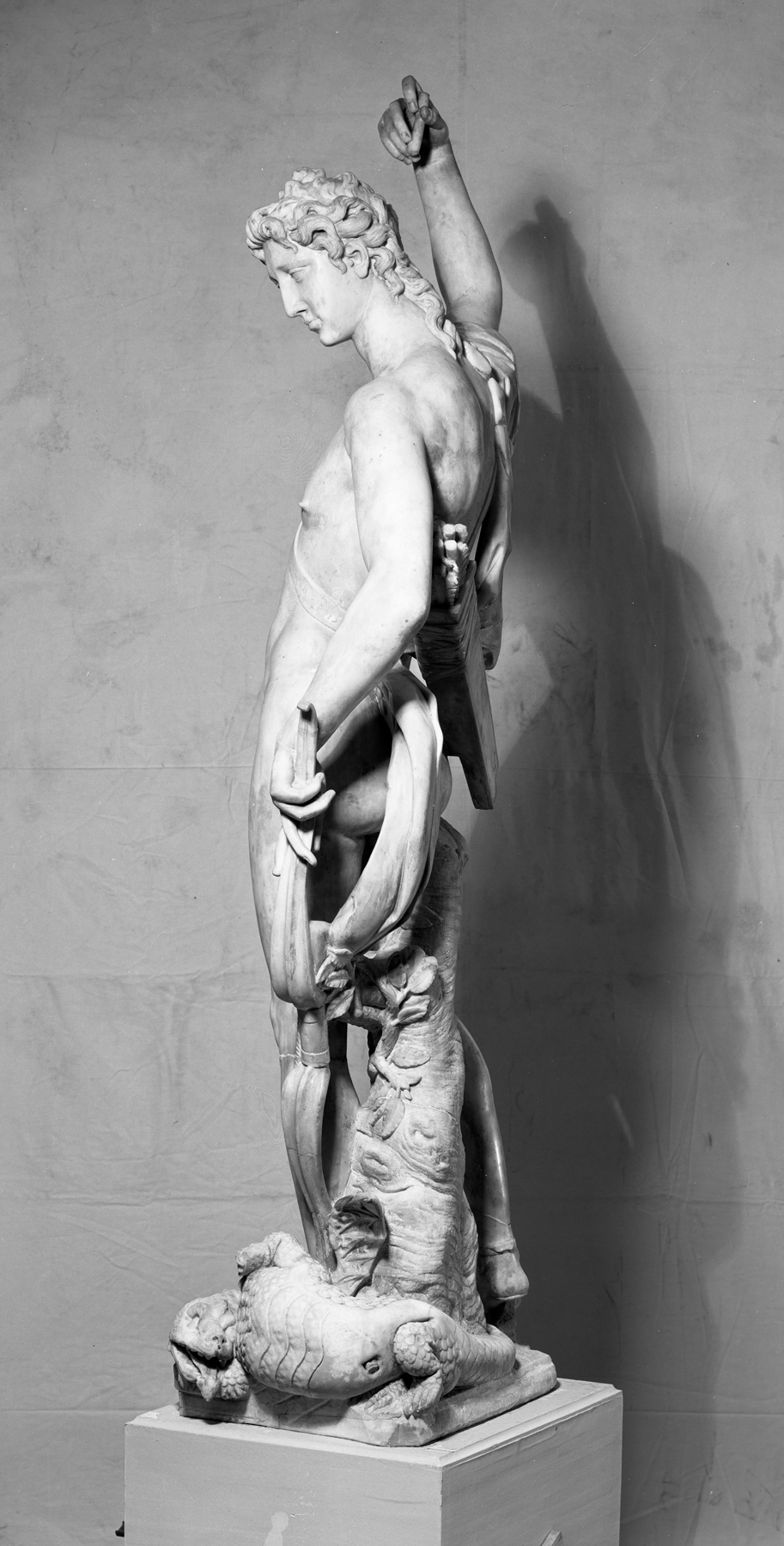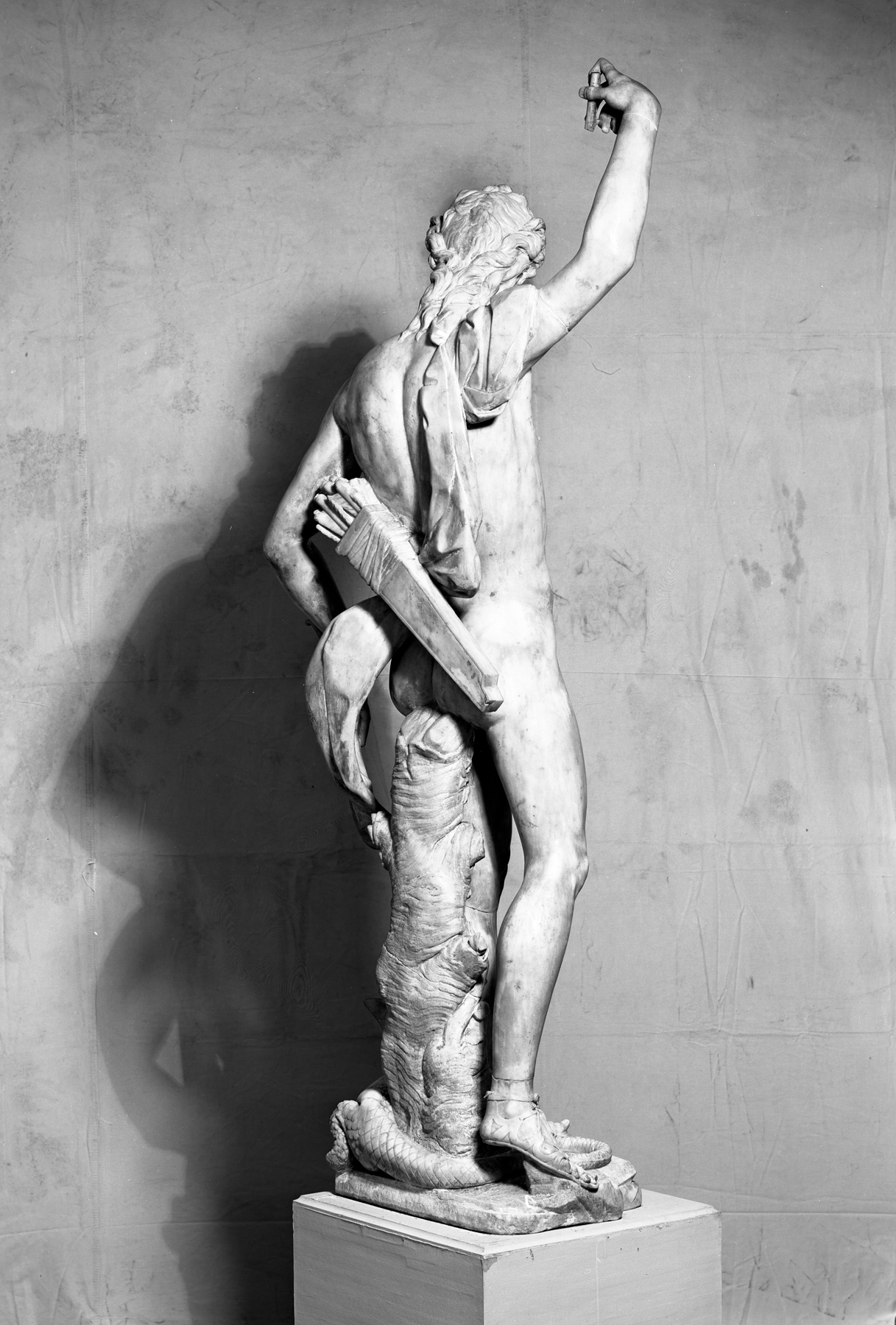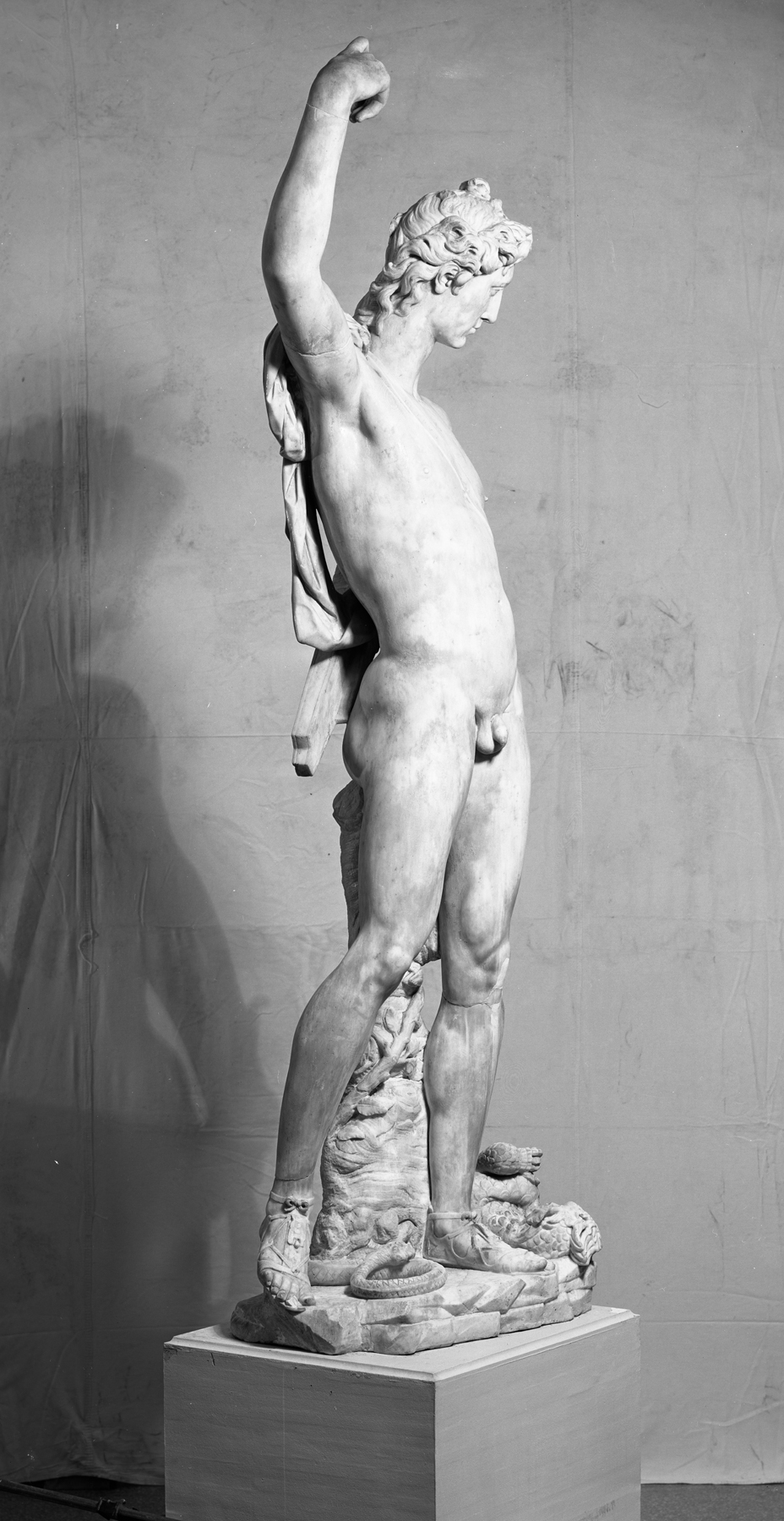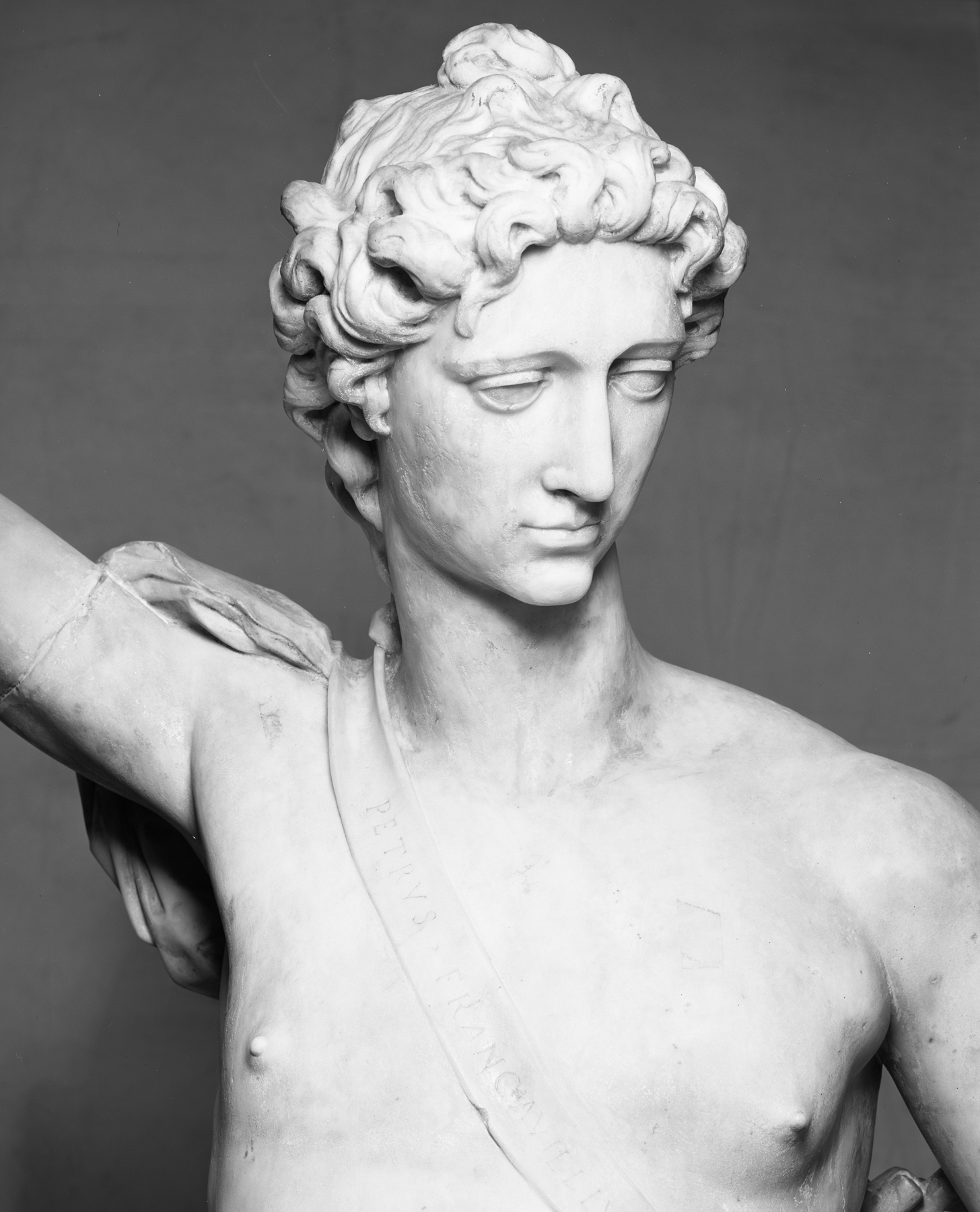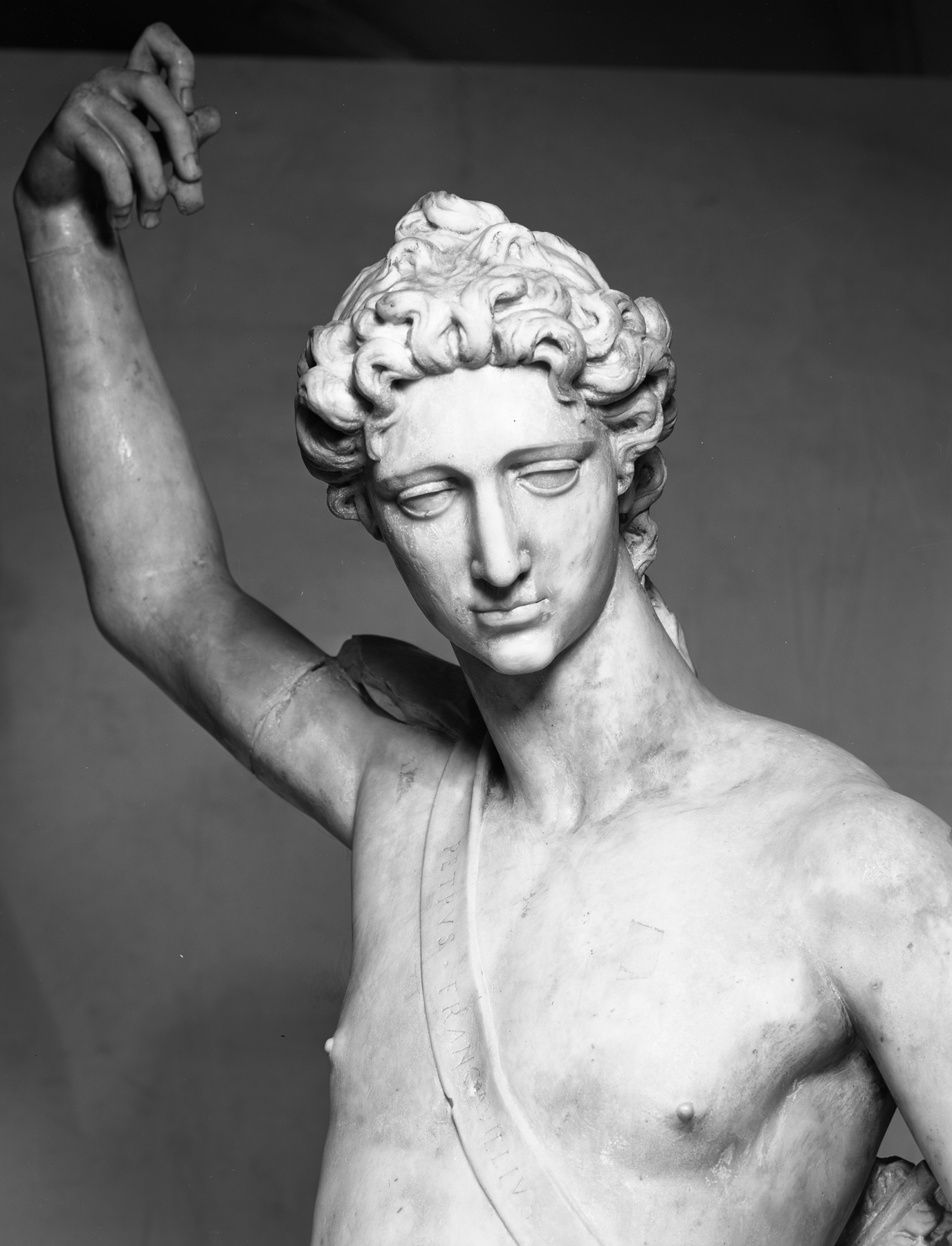Apollo Victorious over Python
(Renaissance Europe )
This statue represents the ancient sun-god Apollo's first triumph, when, at Delphi, he slew with his bow and arrows the serpent Python, which lies dead at his feet. Apollo embodied the ideals of male beauty and heroism. A work of this size was certainly intended for a prominent location, and this statue probably stood in the courtyard of the Palazzo Salviati in Florence.
The sculptor's name and the date are inscribed across Apollo's chest. Born in Flanders, Francavilla moved to Florence, where be became a pupil and the principal assistant to the Medici court sculptor Giovanni da Bologna (1529-1608), also from Flanders. The elegant pose and elongated proportions of this monumental statue are characteristic of the artful, late-Renaissance style known today as Mannerism.
Provenance
Provenance (from the French provenir, 'to come from/forth') is the chronology of the ownership, custody, or location of a historical object. Learn more about provenance at the Walters.
Averardo Salviati, Palazzo Salviati, Florence, ca. 1591, by commission; Raoul Heilbronner [with difficulty from Italy], Paris; Henry Walters, Baltimore; Walters Art Museum, 1931, by bequest.
Conservation
| Date | Description | Narrative |
|---|---|---|
| 6/26/1961 | Treatment | cleaned |
| 7/6/1970 | Treatment | cleaned |
Geographies
Italy, Florence (Place of Origin)
Measurements
63 3/16 in. (160.5 cm)
Credit Line
Acquired by Henry Walters
Location in Museum
Accession Number
In libraries, galleries, museums, and archives, an accession number is a unique identifier assigned to each object in the collection.
In libraries, galleries, museums, and archives, an accession number is a unique identifier assigned to each object in the collection.
27.302



